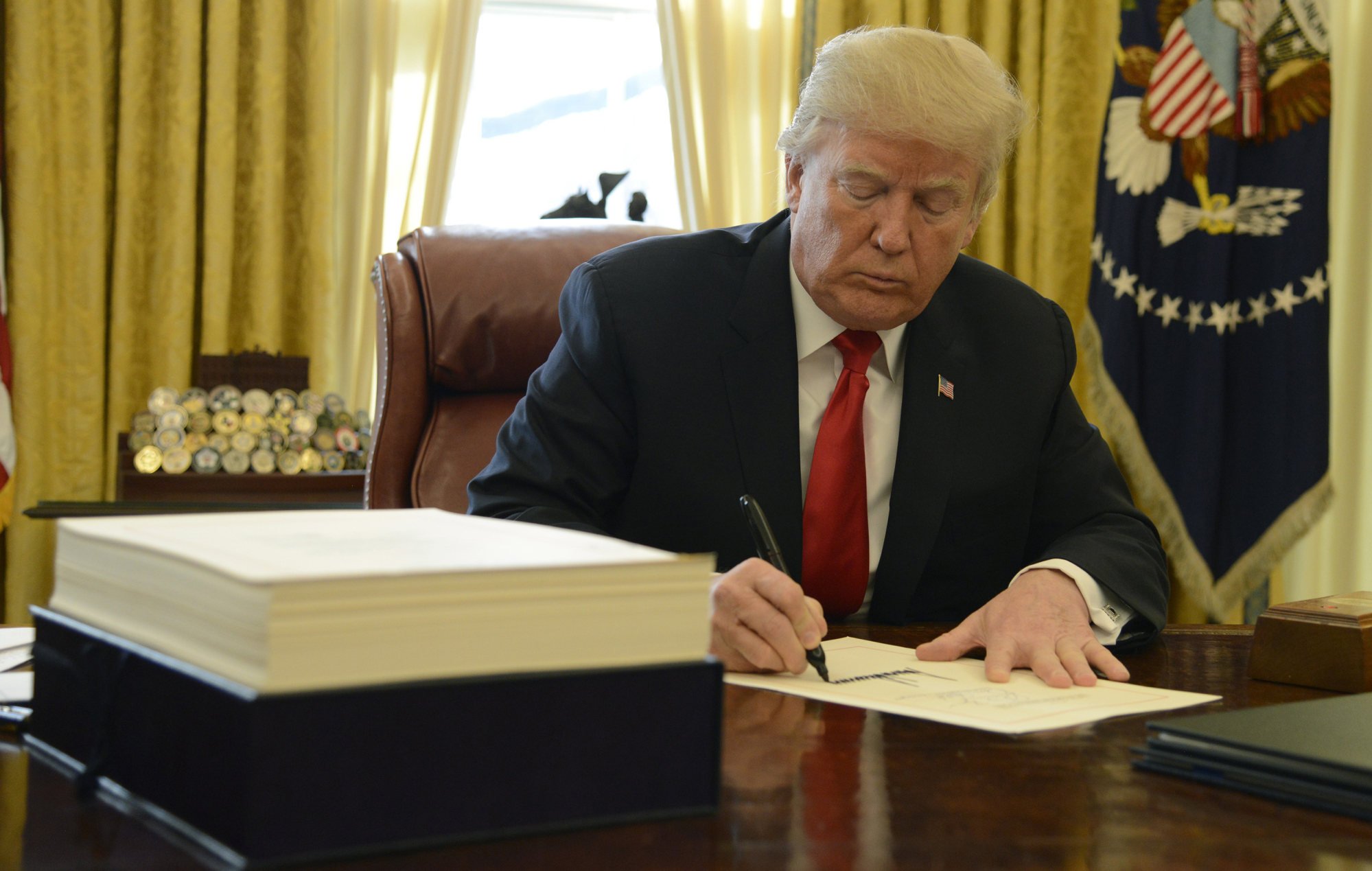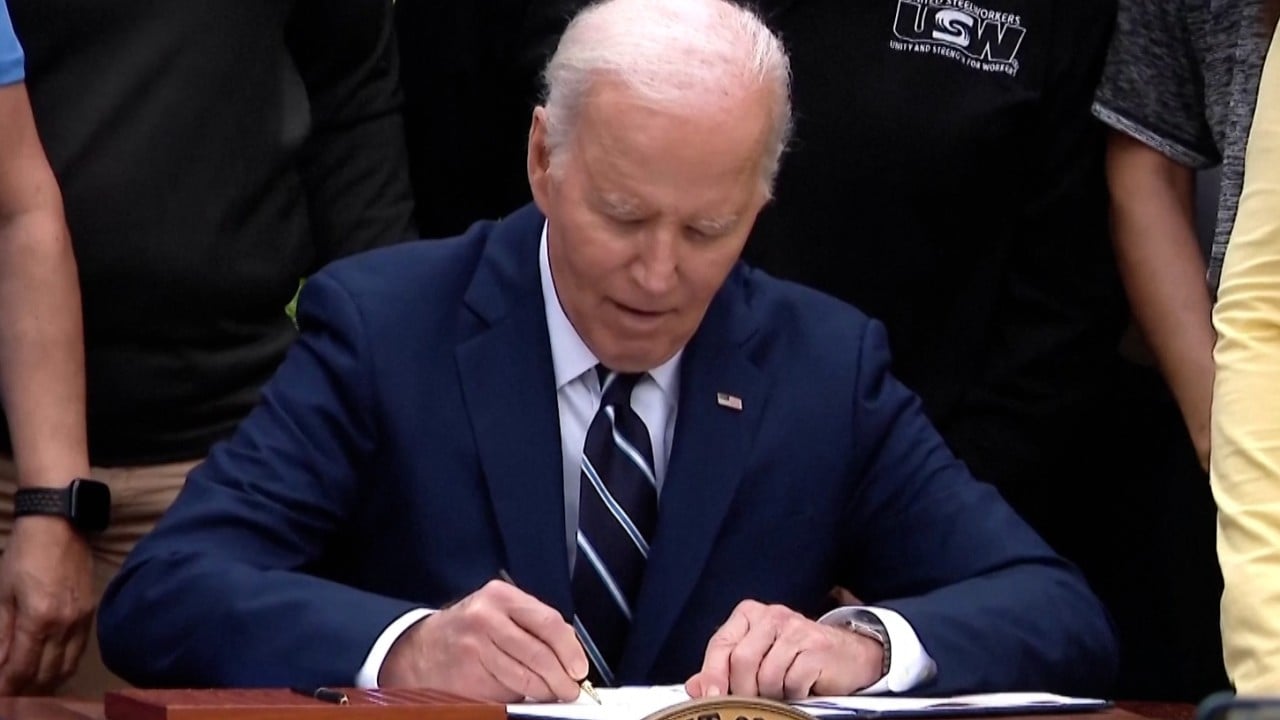Last week, Biden announced a 100 per cent tariff on electric vehicles (EVs) from China, roughly a quadrupling of earlier levies. Tariffs are also surging on solar cells, advanced batteries, construction cranes and medical equipment, as well as steel and aluminium.
Count the ways Biden trying to out-Trump Trump is sure to backfire. One is higher costs for US households. Another is more pressure on global supply chains. And let’s not forget the ways China is sure to retaliate.
US Treasury Secretary Janet Yellen isn’t stupid. Yet she followed the announcement of the tariffs with painfully naive talking points. “Hopefully we will not see a significant Chinese response,” Yellen told Bloomberg, somehow with a straight face. “But that’s always a possibility.”
You can bet on it, and it won’t be pretty. Neither is the signal Biden just sent Asia’s way: that the US is running out of innovative ideas to increase its global competitiveness.
One of the most refreshing pivots of the Biden era has been building US economic muscle at home. The Trump era was about tripping up China’s economy. Biden has focused more on seeking to compete with China organically.
Case in point: the 2022 Chips and Science Act. That policy alone deployed nearly US$300 billion to strengthen domestic semiconductor capacity, encourage innovation, increase productivity and promote research and development.
It marked a sea change from the Trump era, the centrepiece of which was a tax cut which did nothing to raise the country’s economic game or increase domestic capacity. Had Trump’s tax scheme boosted innovation and productivity, US inflation might not be rising at the 3.4 per cent year-on-year rate it did in April.

Until now, Biden appeared to be working up even bigger plans to rival Beijing’s multitrillion-dollar effort to lead the future of EVs, semiconductors, renewable energy, artificial intelligence, robotics, biotechnology, aviation, high-speed rail and other sectors.
Sadly, it appears Biden is joining Trump back in the 1980s, when tariffs of the kind he’s employing might have worked. Trump has long been trapped in that era, one in which Japan inhabited the economic nemesis role China does today.
Between 2017 and 2021, Trump’s advisers tried to make 1980s-style trickle-down economics great again. They failed, just as Trump’s top Asia ally in Tokyo did. Then-prime minister Shinzo Abe also thought the recipe for greater prosperity was surging stocks. Wages didn’t rise much, though, undermining the broader economy.
Biden’s channelling of the 1980s is dispiriting. From a political standpoint, one can see why he is desperate for a narrative shift. Biden’s poll numbers remain inexplicably low considering Trump’s disastrous handling of the pandemic and 88 criminal charges in four cases. But huge tariffs are not the way to beat China, something the Biden team should have learned from Trump’s failures.
This isn’t a defence of President Xi Jinping or China’s economy. His decade-plus in power has made China Inc. less transparent, given inefficient state-owned enterprises a wider berth and slow-walked efforts to recalibrate growth engines. The glacial pace of addressing the property crisis is fuelling deflation. Youth unemployment is at record highs at the worst possible moment.
China’s overcapacity issues, meanwhile, are becoming something of an international incident, hence Biden’s move to head off an expected surge in Chinese imports. This might slow China’s hi-tech-manufacturing boom, but trade curbs treat the symptoms of America’s troubles, not the underlying causes. Biden’s focus needs to be on getting the US workforce in better shape for the global economy of tomorrow, not one that existed in 1985.
His priorities must be increased disruption and productivity, and strengthening human capital. He should also encourage Silicon Valley to focus less on tools to sell internet ads and more on game-changing technologies that boost the US economy.
Yellen, meanwhile, should be tending to Washington’s pre-existing troubles. The biggest is a national debt moving towards US$35 trillion, roughly twice the size of China’s gross domestic product. The deepening ocean of red ink surrounding Washington is even more dangerous when you consider the level of rancour on Capitol Hill.
When Fitch Ratings revoked Washington’s AAA credit score in August 2023, it cited the political polarisation behind the January 6, 2021, insurrection among the reasons. Anyone who thinks Trump will accept the results should his Republican Party lose in November hasn’t been paying attention.
Biden’s China tariffs won’t increase global faith in the US dollar or Treasuries securities. They won’t prod Detroit to make better cars that consumers in Europe, Asia and other key markets want. They won’t increase China’s desire to work with Washington on climate change, counternarcotics or other important issues.
The issue is how Biden prepares the US to compete with China in the years ahead. Here, harking back to policies that might have worked 40 years ago is a loser, and Biden and Yellen should know better.
William Pesek is a Tokyo-based journalist and author of “Japanization: What the World Can Learn from Japan’s Lost Decades”



